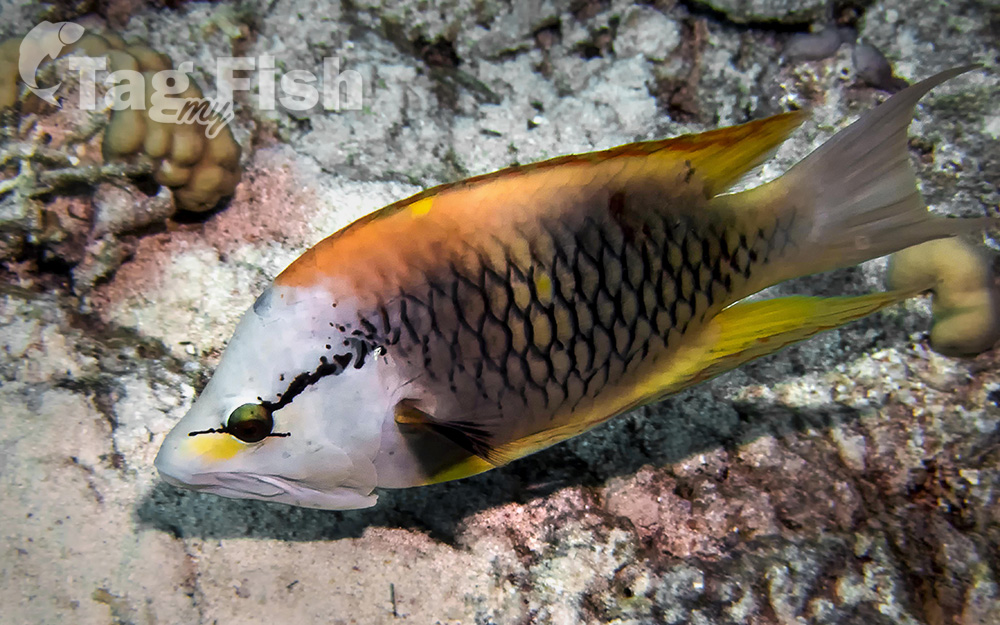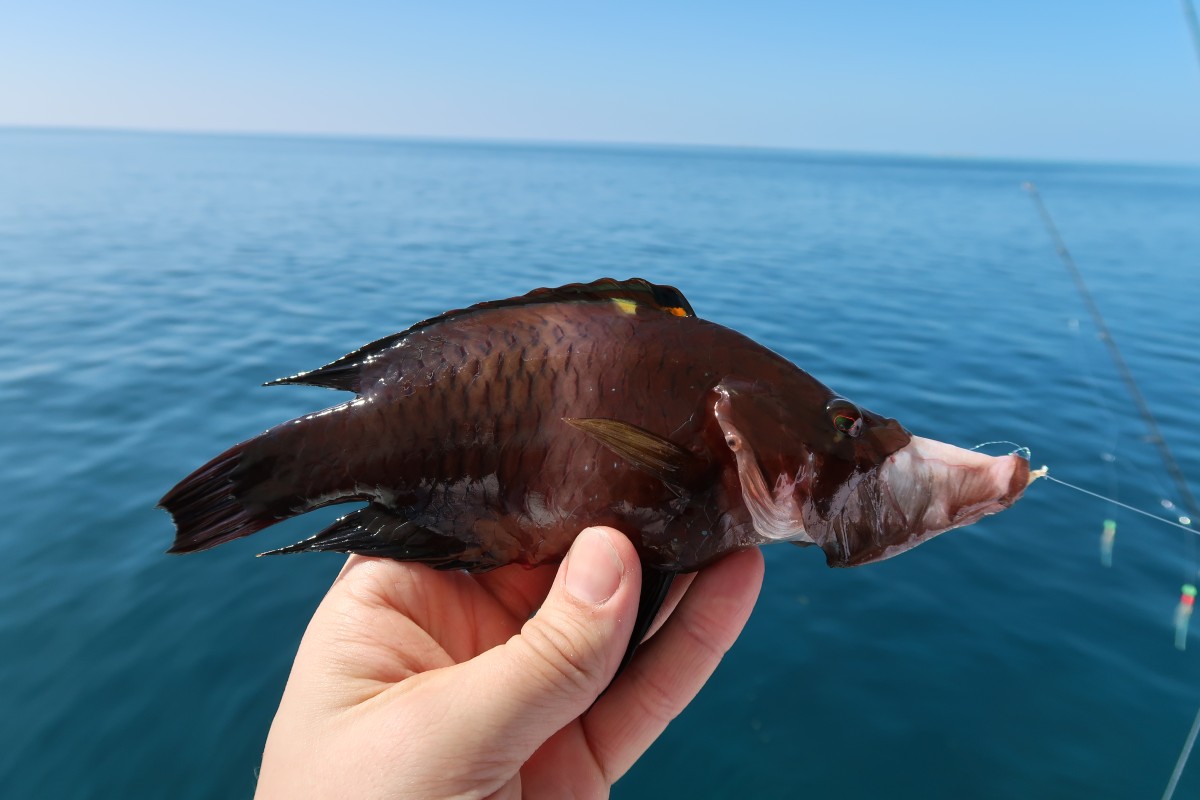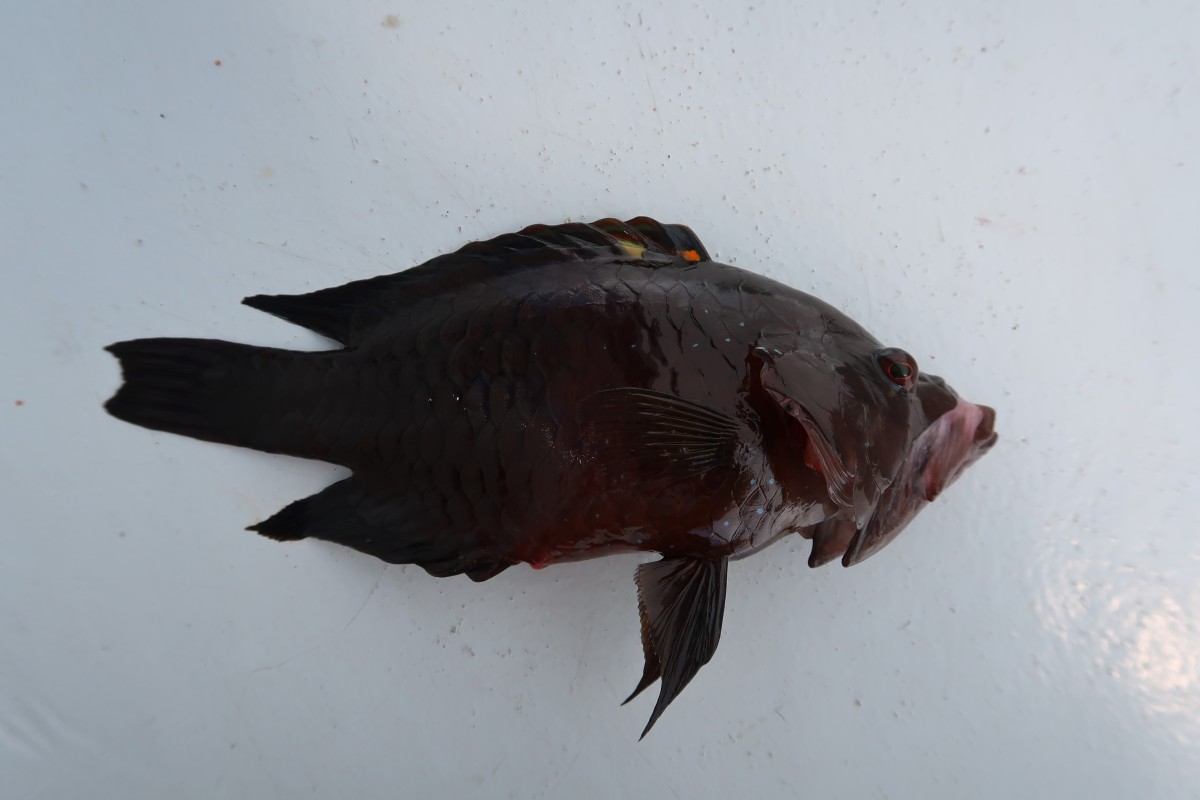Sling-jaw wrasse
(Epibulus insidiator)

Classification
General data
The slingjaw wrasse (Epibulus insidiator) is a species of wrasse from the family Labridae which is native to the tropical waters of the Indo-Pacific where it occurs around coral reefs. This species is of minor importance to local commercial fisheries and can be found in the aquarium trade. Relatively mundane at first glance, this fish is notable for its highly protrusible jaws.
Description
The most notable feature of the sling-jaw wrasse is that the mouth of this species is armed with highly protrusible jaws which unfold into a tube which is easily half its head length. The males of this species are greyish-brown with orange on the back, a yellowish transverse bar on the flank and a pale grey head which is marked with a thin black stripe running through the eye. The scales of the males body are edged with darker pigment. The females can be either bright yellow or dark brown while the juveniles are brown with thin white bars on their flanks and white lines radiating out from their eyes. Intermediately patterned individuals which have yellow blotches, a pale tail and sometimes with black pectoral fins do occur. The dorsal fin has 9–10 spines and 9–11 soft rays while the anal fin has 3 spines and 8–9 soft rays.
The largest specimens may attain a standard length of 54 centimetres (21 in).
The similar latent sling-jaw wrasse (Epibulus brevis) has a more restricted distribution and is smaller, with duller coloured males, the females have black pigment on their pectoral fins and has longer pectoral fins.
Extreme jaw protrusion
The sling-jaw wrasse possesses the most extreme jaw protrusion found among fishes. The species can extend its jaws up to 65% the length of its head. The speed and length to which the jaw protrudes allows it to capture small fish and crustaceans. The genus this species belongs to possess one unique ligament (vomero-interopercular) and two enlarged ligaments (interoperculo-mandibular and premaxilla-maxilla), which along with a few changes to the form of cranial bones, allow it to achieve extreme jaw protrusion.
Distribution
The slingjaw wrasse is found in a wide area of the Indo-Pacific region from the eastern coast of Africa, Madagascar and the Red Sea through the Indian Ocean coasts and islands into the Pacific as far east as Johnston Atoll in Hawaii, although vagrants occur in the main Hawaiian chain. It reaches north to Japan and south to New Caledonia. It is found along the northern coasts of Australia from the Houtman Abrolhos archipelago to reefs in the Coral Sea off Queensland.












